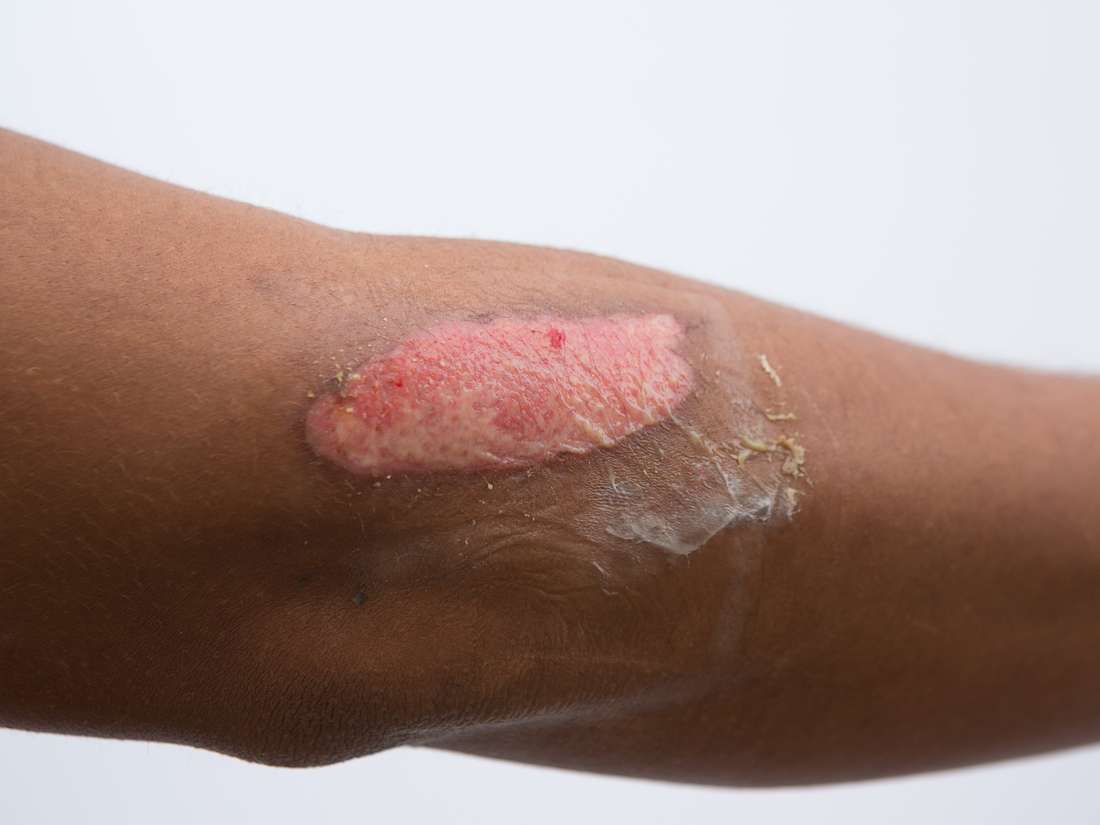

Steroids or immunosuppression medications also pose risks. Any medical condition that may compromise blood flow can impact wound healing, including vascular disease, heart disease and diabetes. The two things that impact scarring are how much inflammation is associated with the wound, which is related to how long it’s open, and the other thing is genetics.Ī healthy 20 year old is going to heal a burn wound differently from a 60 year old with heart disease and diabetes.Ĭhronic medical conditions: People who are medically complicated may have issues with wound healing or how well they do. The scar severity is going to vary from person to person. With third degree burns, there’s almost always going to be scarring.

Any third degree burn should be seen in a burn center to see if it might heal with careful wound care or will require surgery.
#3RD DEGREE BURN TREATMENT SKIN#
Third degree burns are the ones we worry about because they are more likely to need a skin graft. For most people, that’s as bad as it gets. What we often see is some color mismatch where the affected area doesn’t perfectly match the surrounding skin. It’s hit or miss if they are going to leave a scar. In healthy people, second degree burns should eventually heal without the need for skin grafting. You can take an over-the-counter anti-inflammatory medication, if needed. If it does break, clean the area and apply an antibiotic ointment and cover loosely with a sterile bandage. Second degree burns need more wound care. If the second degree burn involves more than 20 percent of the body in adults or more than 10 percent of the body in children or the elderly, you’ll definitely want to seek medical care. Second degree burns can be serious, especially if they cover a large area of the body. It won’t hurt the burn but there’s no scientific evidence it helps. If you’d like, you can apply aloe vera or vitamin E. We usually treat them for comfort with an over-the-counter anti-inflammatory medication such as acetaminophen, aspirin, ibuprofen or naproxen. First degree burns don’t actually need anything.

If it’s a first degree burn, you can typically take care of it at home. Once you’ve cooled the area, assess how serious the burn is and treat it accordingly:

The fat content in butter may actually deepen the injury if you haven’t cooled it thoroughly. Avoid using ice to cool the burn as extreme cold can damage the tissue. These burns can be very painful but if the nerve is damaged, they may not hurt at all.Įven before you figure out the type of burn, the first thing you’ll want to do is stop the burning process by running cold water over the burn. Third degree burns: These burns can blister and peel but the skin underneath looks white and dry.They are more painful than first degree burns. Second degree burns: This type of burn blisters and sometimes can even peel on its own revealing pink, juicy skin.First degree burns: These burns are basically like a sun burn where the skin turns red and it hurts but it doesn’t blister and it doesn’t peel.You wonder – can I treat it at home or should I go to the emergency room? Well, it really depends.ĭetermining burn severity can be a little tricky if you don’t deal with burns all the time.


 0 kommentar(er)
0 kommentar(er)
